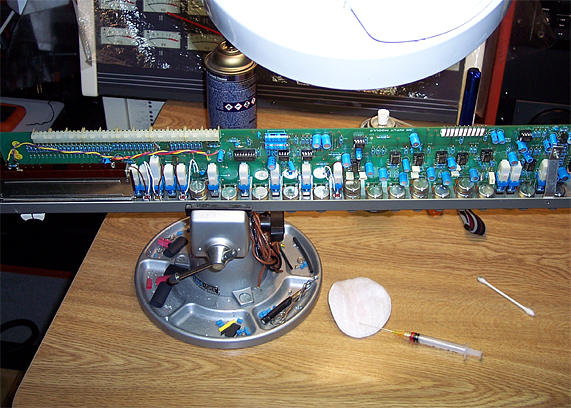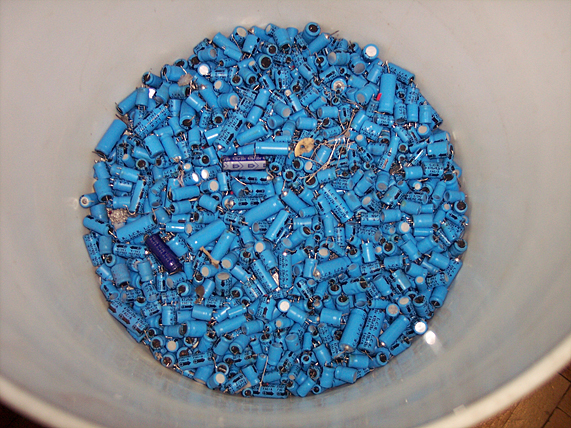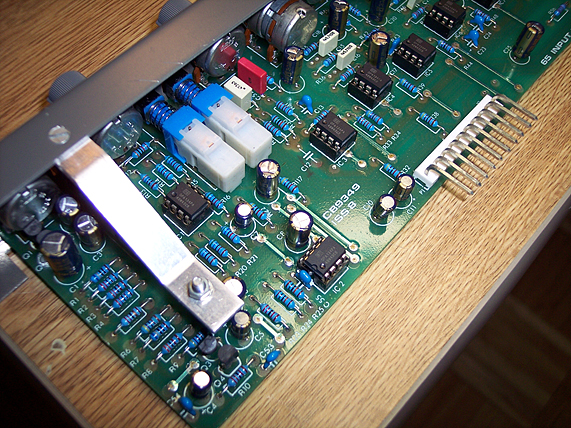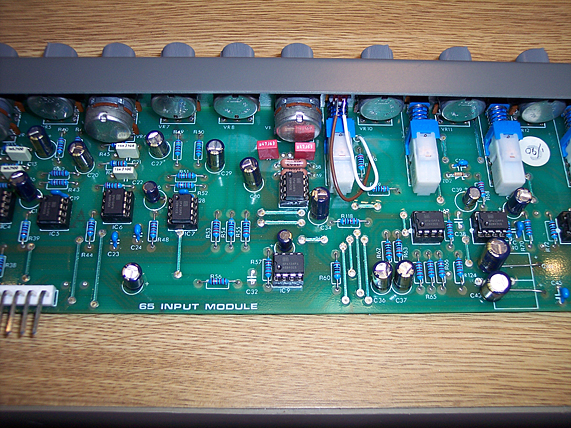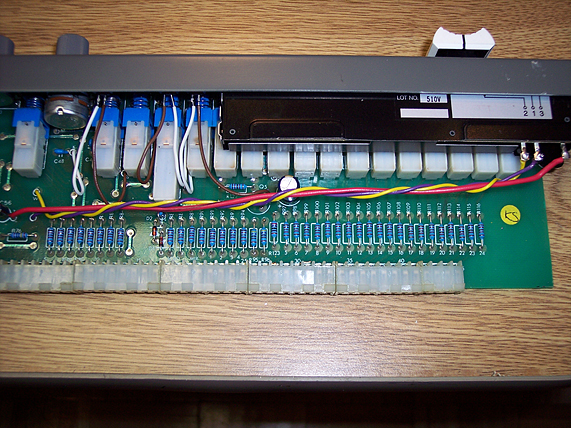I'm looking forward to your more measured thoughts on the console once you've had a chance to acclimate to it.
OK...this will probably be my last entry in this thread for the Trident 24 London...unless people post follow-up questions.
I hope some of the details are helpful to anyone doing similar things, and especially for any other Trident 65/75 Series owners.
So after listening to some audio through the console the last week or two, my overall view is pretty much what I initially heard when the refurb was completed. The console now has more clarity in the HF...much crisper, in a good way...and the low end is tighter and punchier.
I know this may sound cliché...but it's like a film was lifted from the console's sound...like when cleaning a pair of glasses, everything is now more "HD". I don't mean that its now super clean in a "sterile" way....but prior to the complete recap and re-chip, compared to now, the sound was a little "looser" and not as defined, plus with the stock TL071CP chips, it had a touch of lower mid "honk"...compared to the BB OPA134PA chips.
It's not something that would have stuck out when just listening to the stock console...but I had some BB channels already in it before re-chipping the rest, so I could easily compare them.
I like the sound of the BB chipped channels, so now all of my input channels are BB, except for two, which were modified substantially before I got it...and they have their own chips/sound.
I actually like the BB channels better, but the two that were modified by Audio Upgrades are just more transparent, and more cleaner...so I like having them too, as that sound will come in handy for some things.
The group channels I re-chipped with new TL071CP chips...and it's like a lot of people said...the newer TL chips do sound much better than what they were making 30 years ago. I have enough spares of the new TL chips, that I may take two of the input channels and switch out the BB chips with the new TL chips. That way, of the 28 input channels, I will have the two heavily modified channels, plus two with the new TL chips...and the remaining 24 input channels would be the BB chips. So I'll have some tonal choices...and still have 24 channels that all sound the same, if I need that during remixes, as I usually come out of my DAW with 24 channels....and my tape deck is 24 tracks.
So the big questions...
Was the full recap worth the time, effort and cost?
Absolutely...I have zero regrets, and with a 25+ year-old console, it really was a necessity.
I think when we use one console for many years, we don't hear that slow degradation that occurs as caps age and dry out and lose their properties. Chances are the caps could continue to "function" for many more years, but they are out of spec or close to it, and the sound quality, especially in the HF (dullness) and LF (looseness) starts to creep in...and those are the two things I immediately noticed after...much more articulate HF and tighter/punchier low end.
Was the re-chip worth the time, effort and cost?
For me it was.
Some people might prefer the sound of the stock TL chips...but even then, I would suggest getting new production TL chips and replacing the 30-year old ones.
That said...some folks may simply prefer the sound of the old chips, and/or want to keep the console stock...so you need to at least experiment with a couple of channels before you decide on chips.
To me, the BB chips take the console to a much better sound quality level. They sound more frequency balanced than the TL chips and I think they provide a more 3D sound that is fatter/bigger.
Doing group channels with new production TL chips instead of BB chips was a twofold decision.
I don't use the group section all that much, maybe just for occasional cue mixes and monitoring. I mean, I doubt I would ever need those channels for actual mixdowns.
Also the TL chips at about $ 0.50-0.60 each are substantially cheaper than the BB chips which are about $2.50 each. When you need about 200 chips to re-chip just the 24 group channels...mmm...yeah, it's a big difference in cost between them. It made more sense to spend the money on other things....like getting all new faders, for both input and group channels, as the stock faders were pretty used up, and cleaning was just barely working on some of them.
AFA the mods I did to the EQ section...I'm very happy with them. I think they really open up the usefulness of the EQ section with the new ranges the mods created...moving 10k Hz up to 12k Hz for the HF shelf, the LF shelf 100Hz down to 70Hz, and moving the variable HPF down from 10 Hz to 5 Hz.
The EQ sounds really good, and now it's also more useful, IMO.
I think this console really benefited from the refurbish and mods, and I should have a lot of years with it.
I'm really looking forward to doing mixes on it, and it will be a nice combination with both tape deck and DAW.
I don't have many other hobbies that are big time/money sinks. Playing, writing, recording, or simply futzing around or fawning over gear...like you guys said, there are people in the world sinking just as much or more into boats, cars, green fees, country club memberships.









